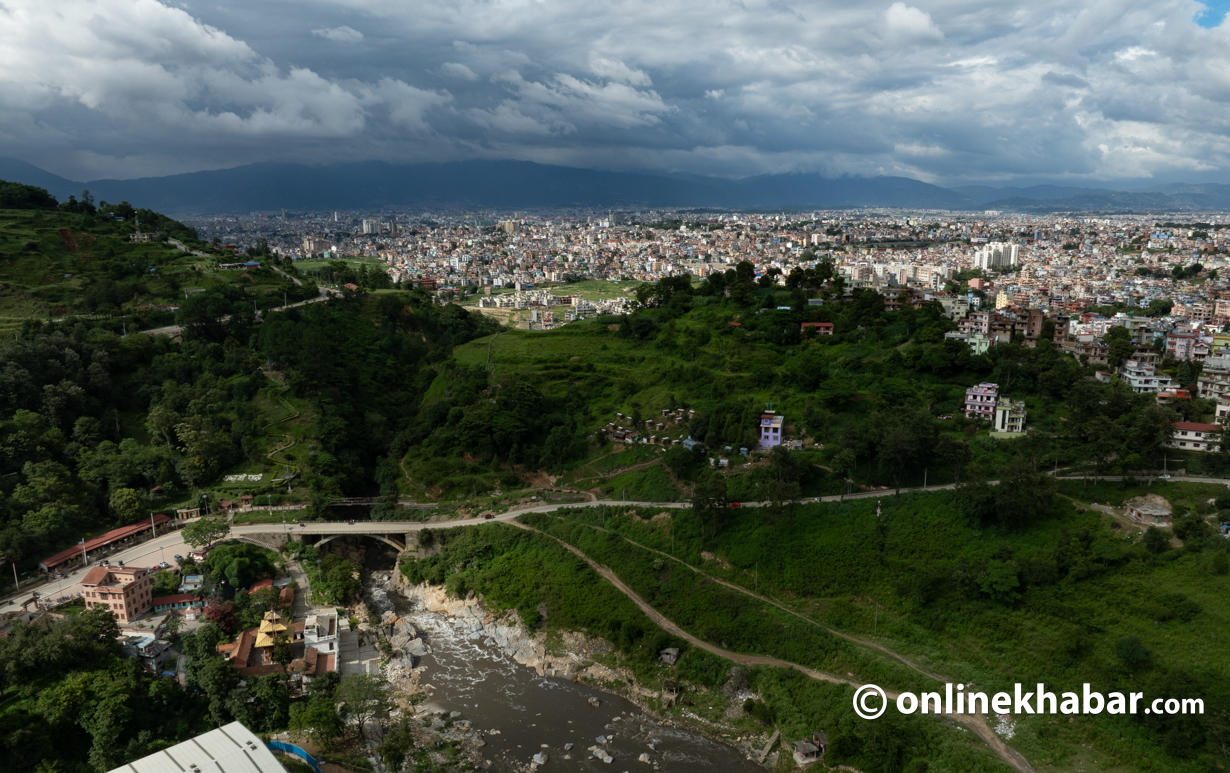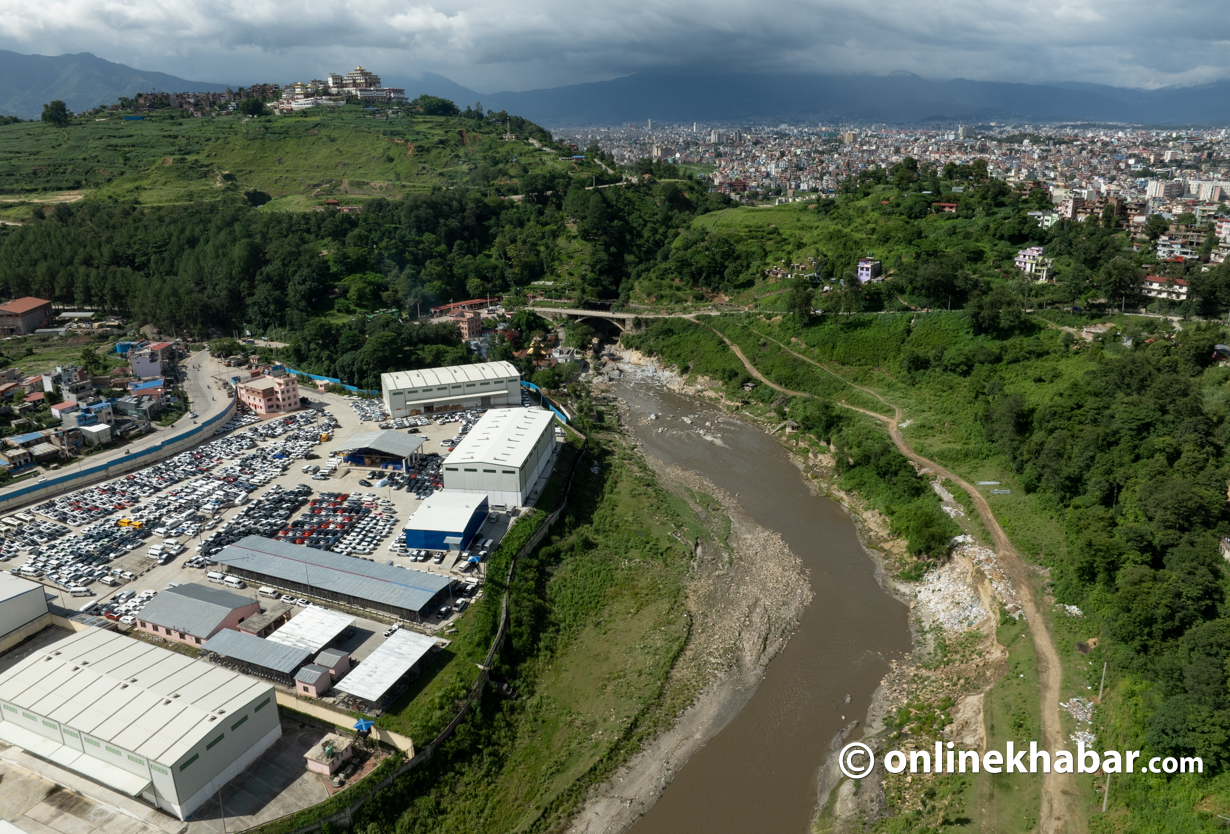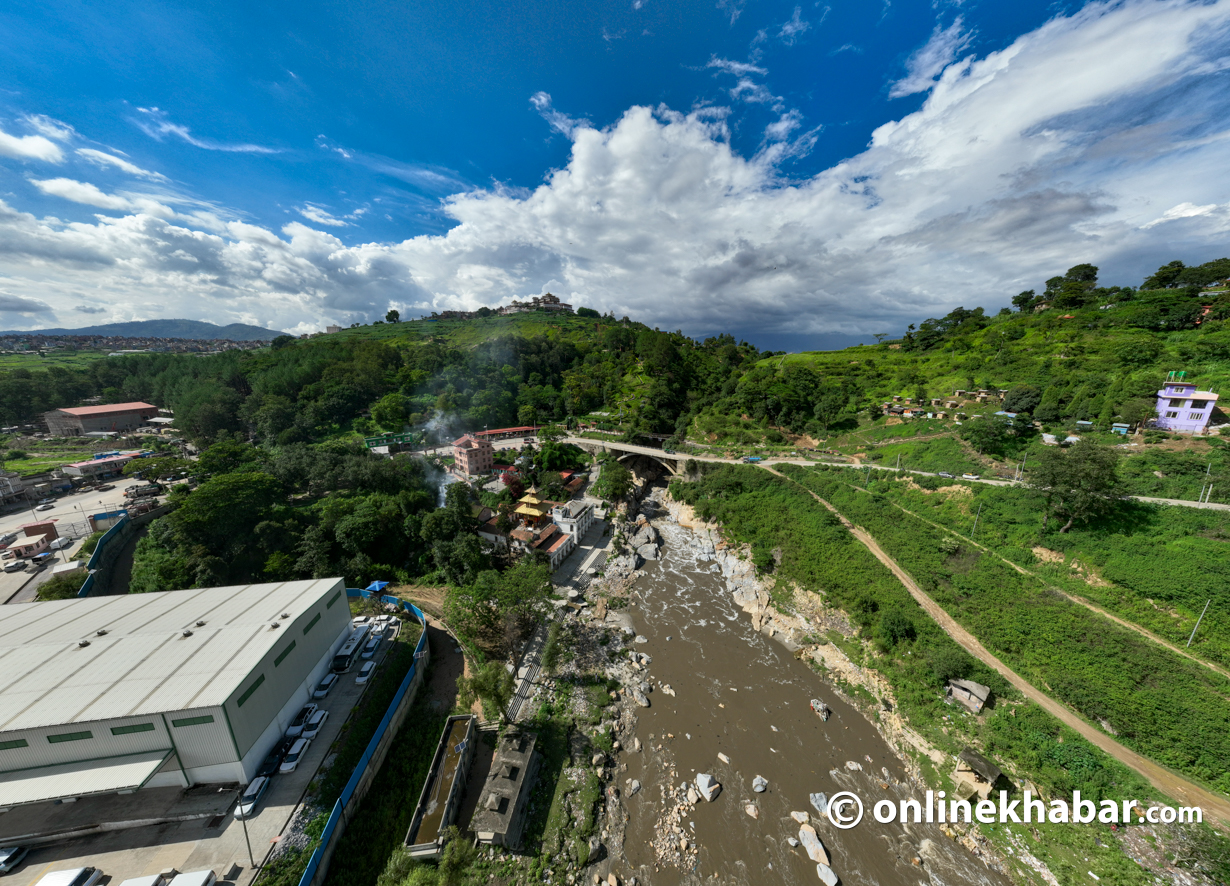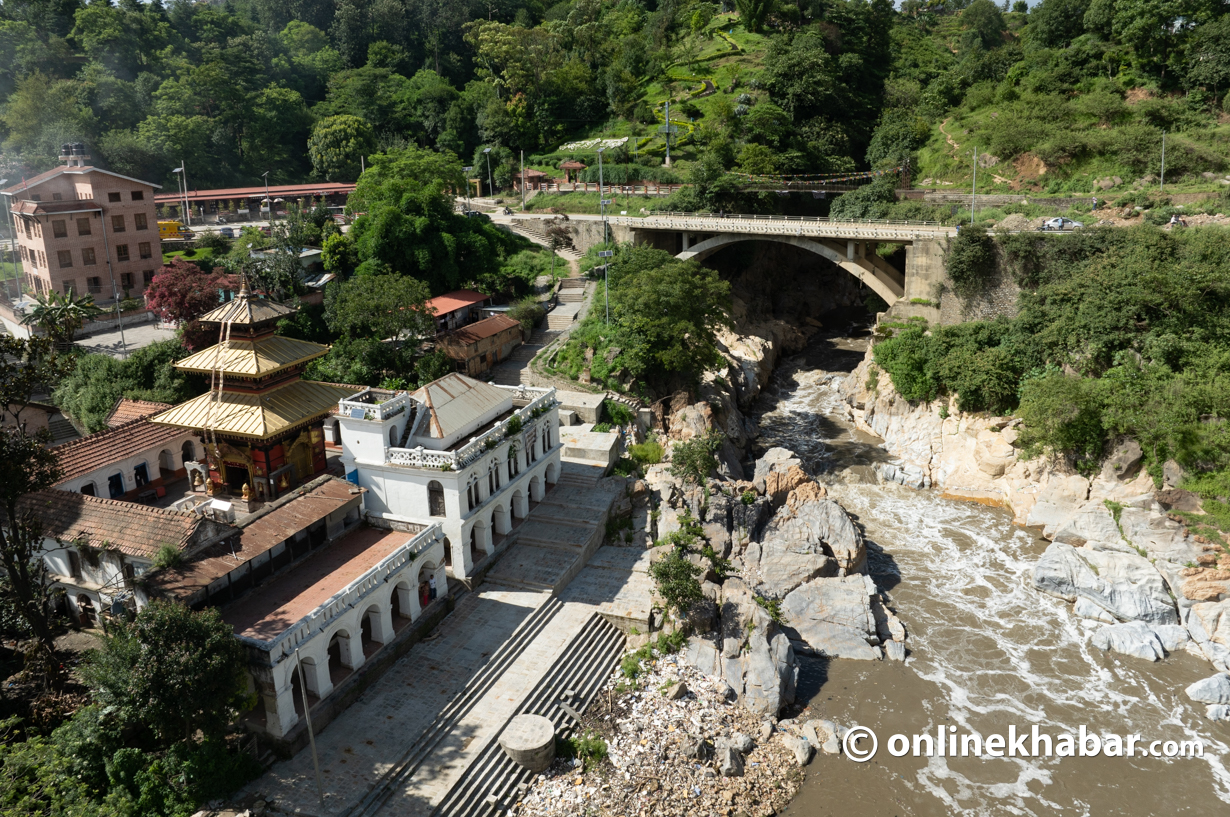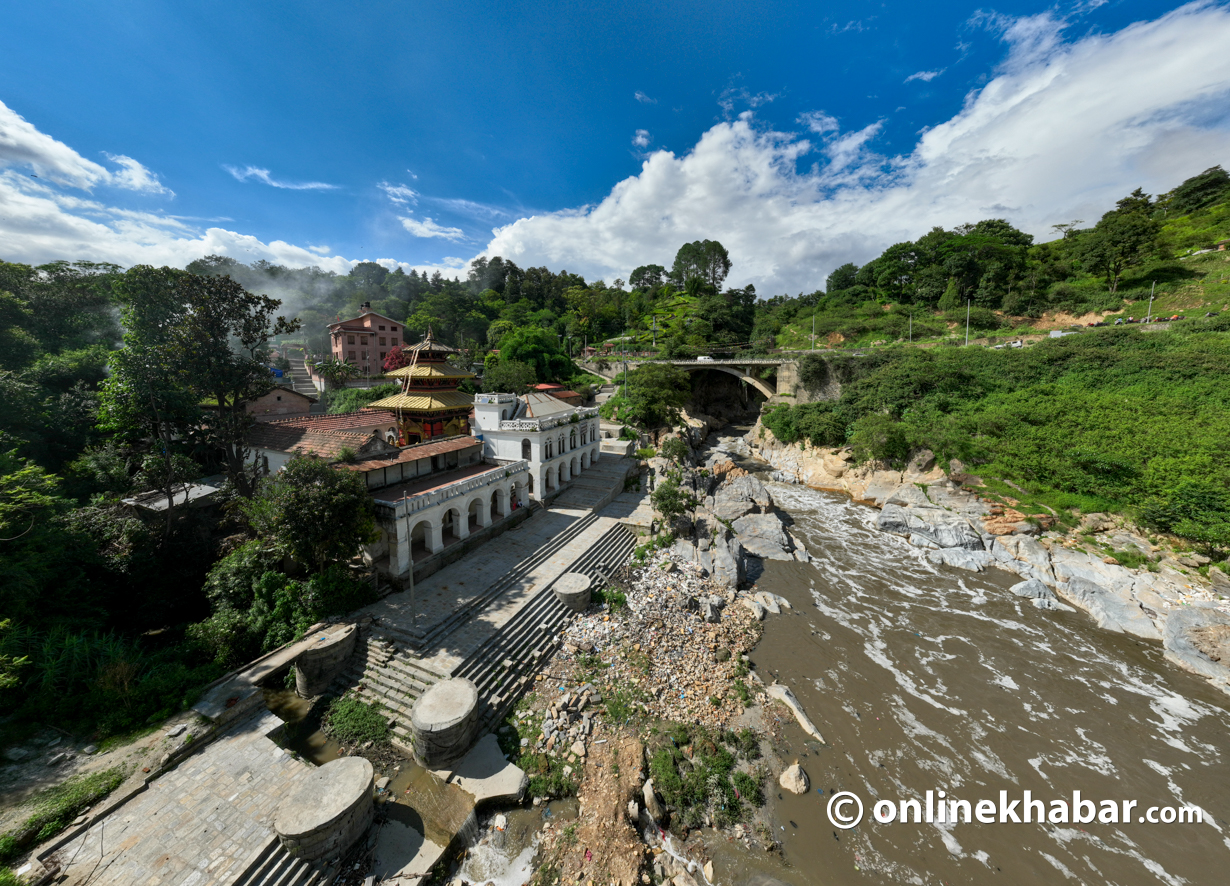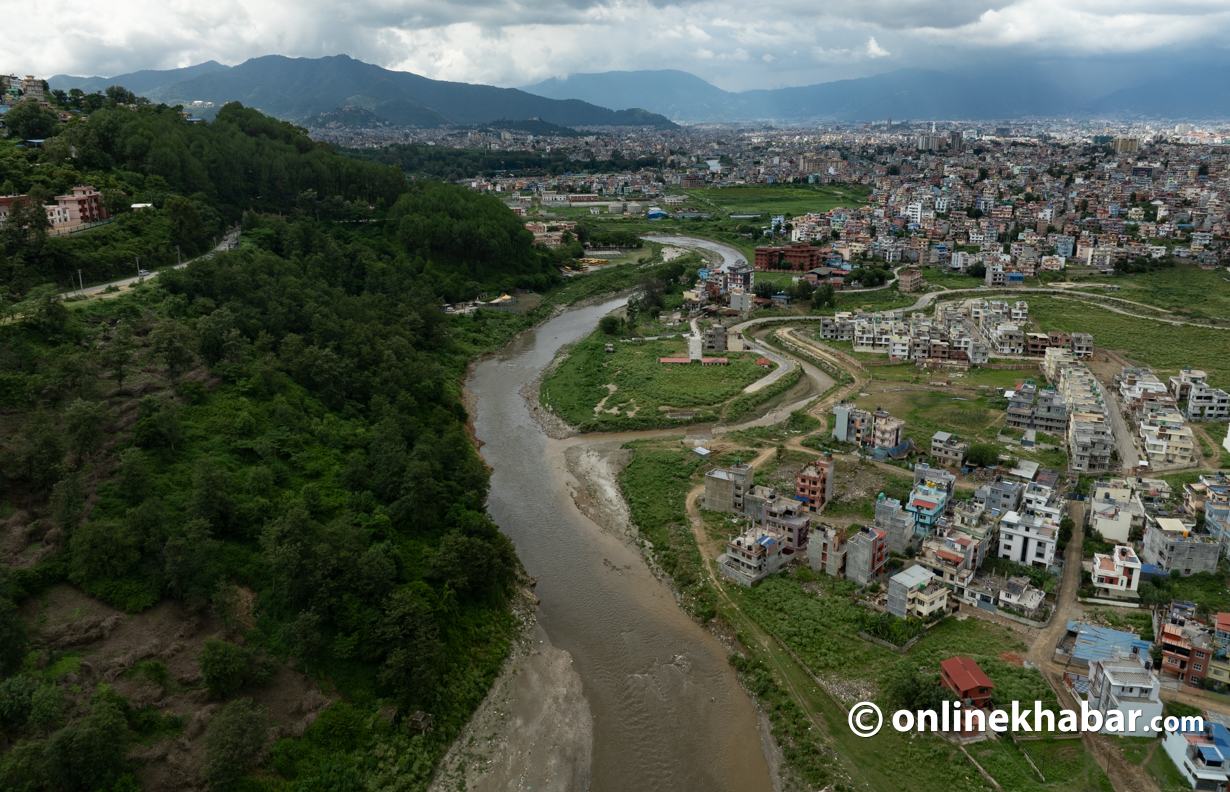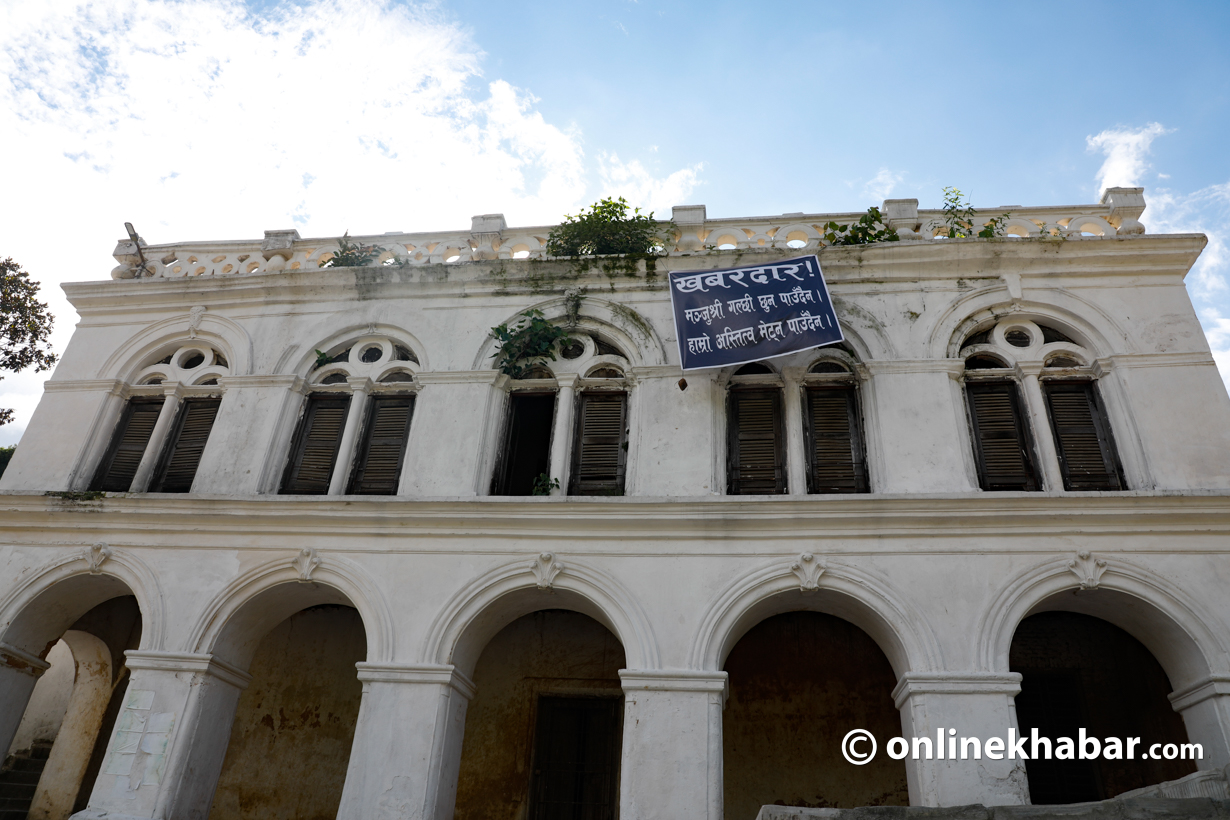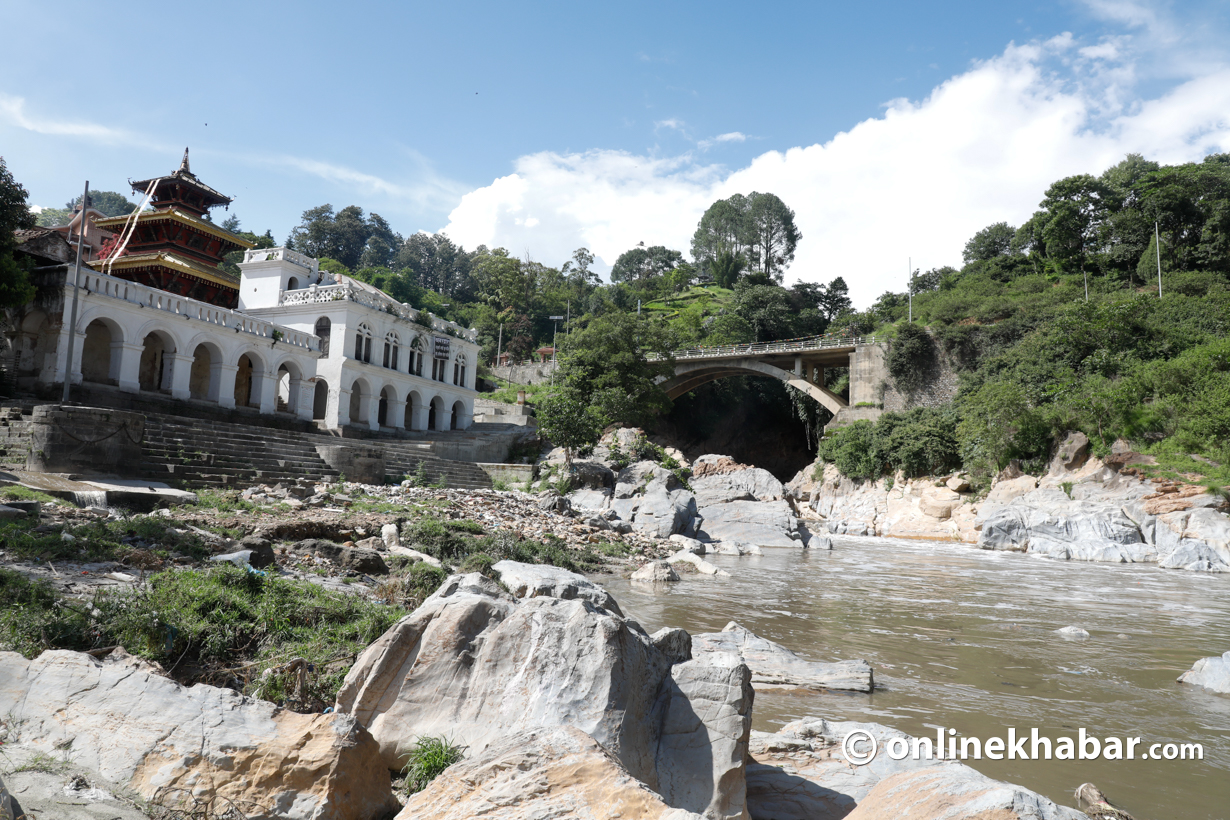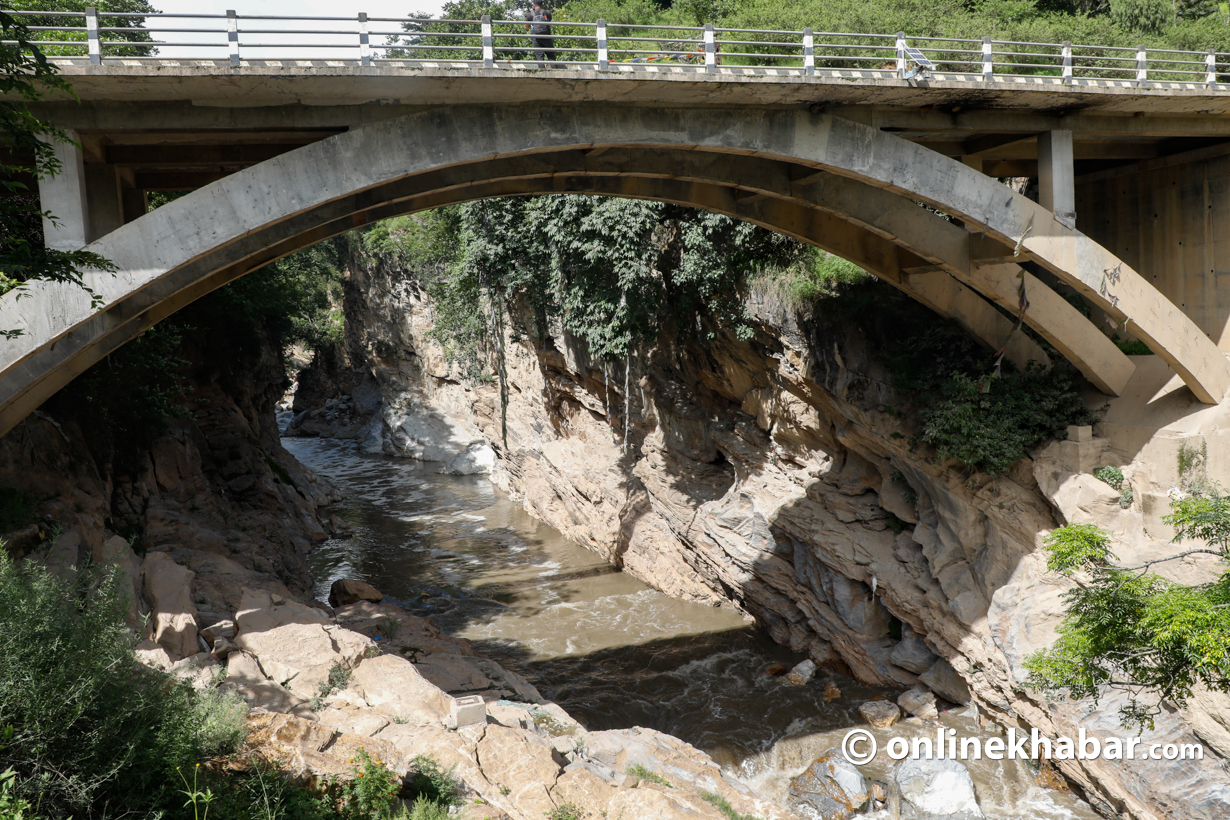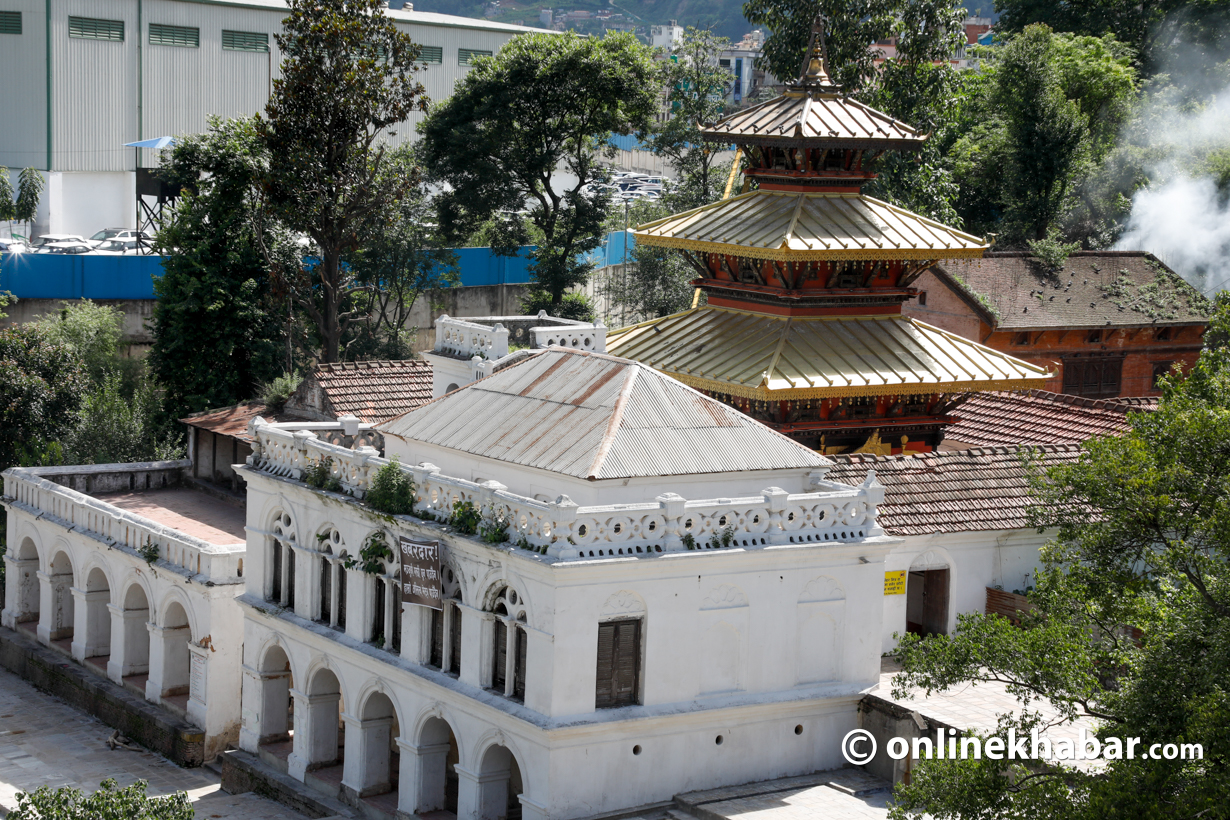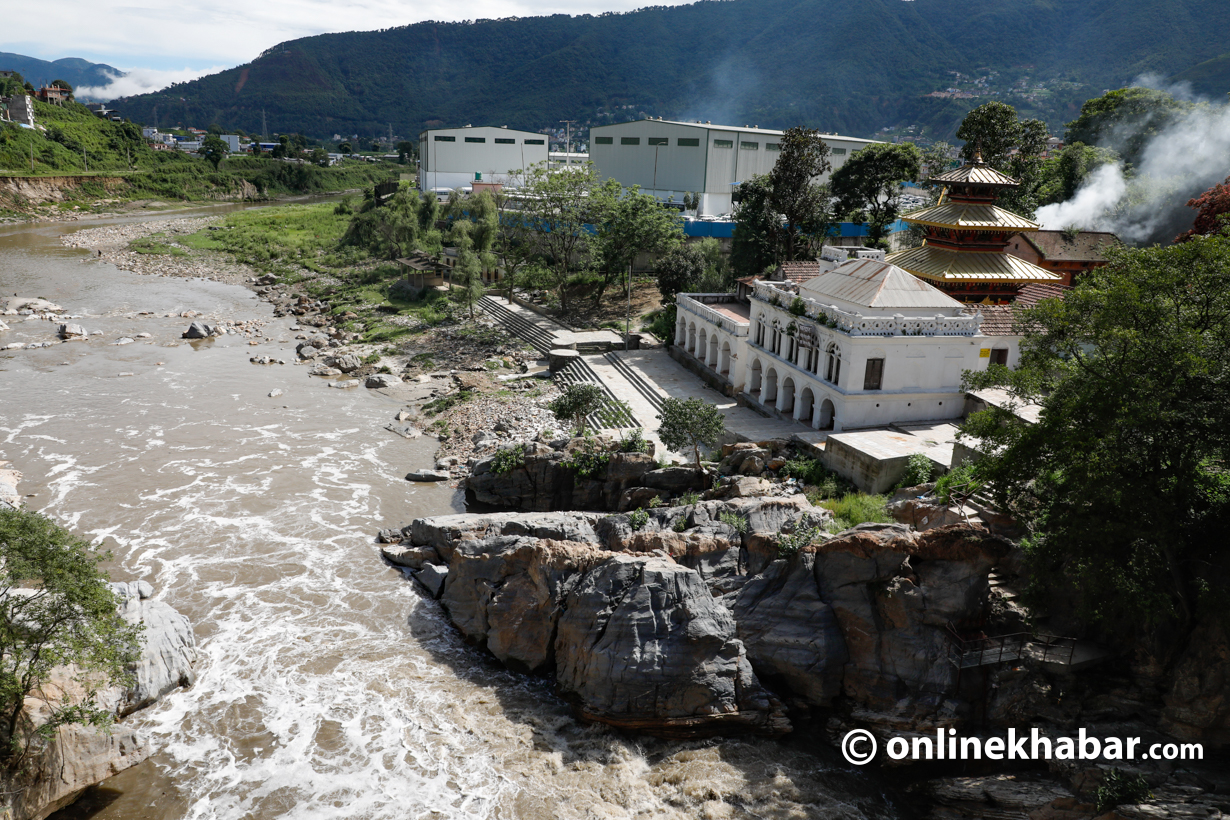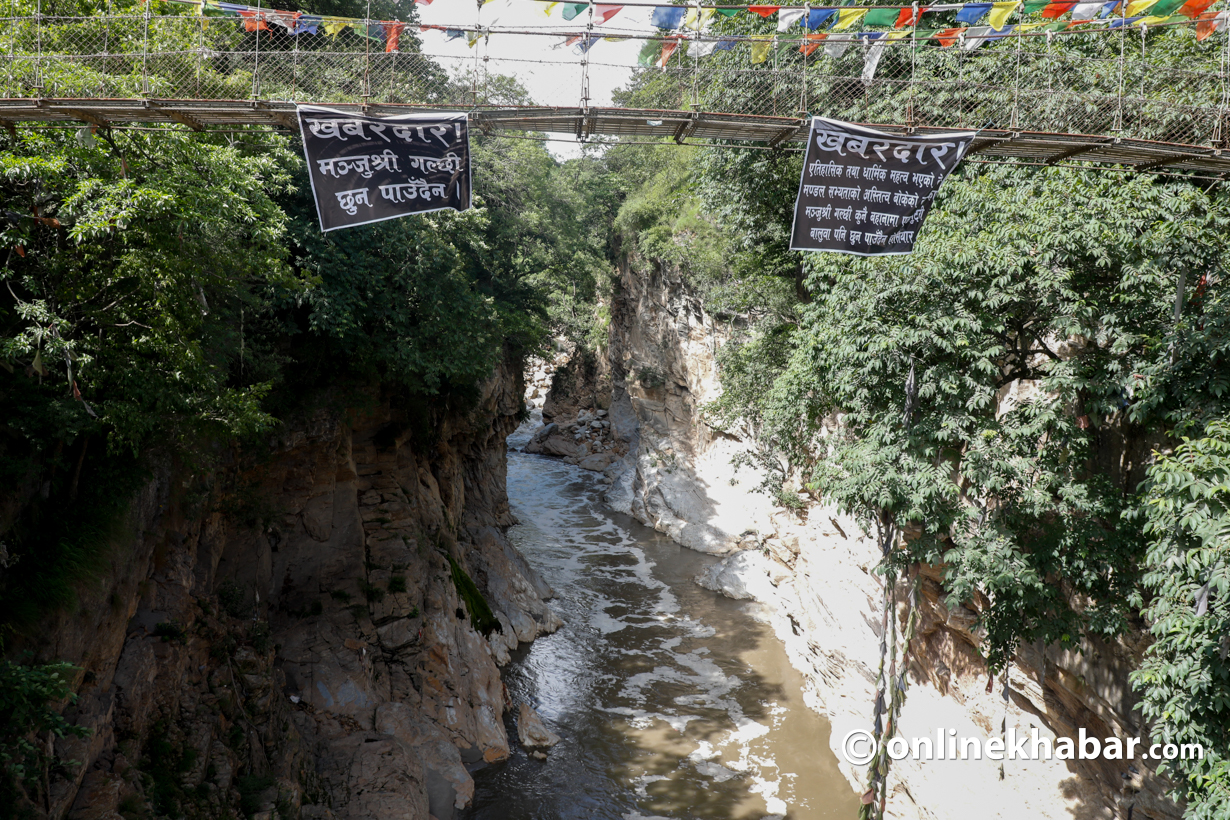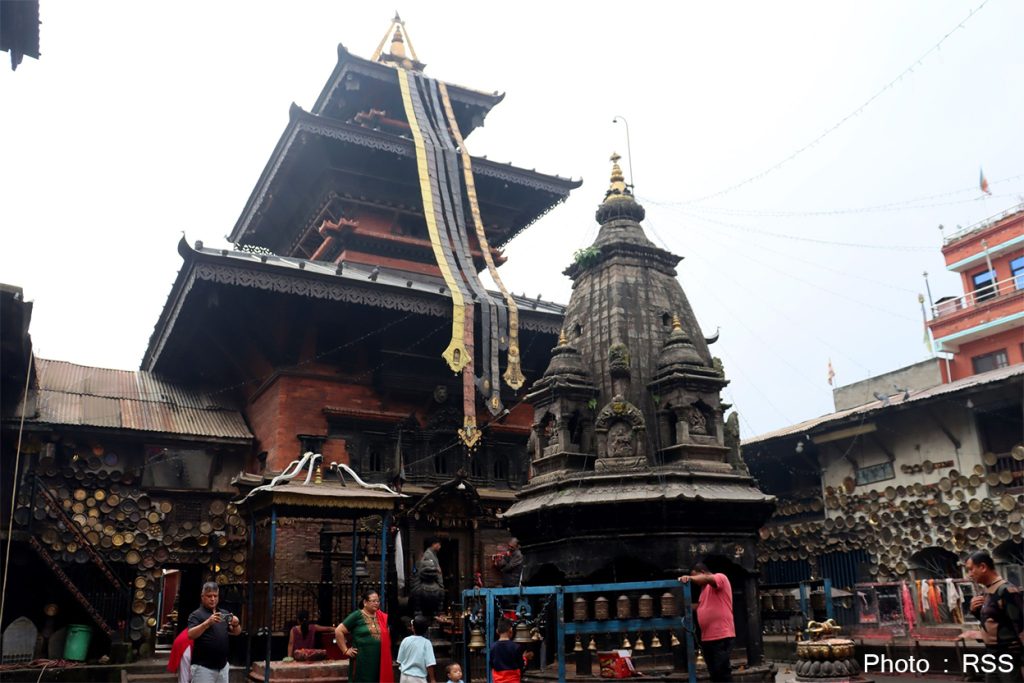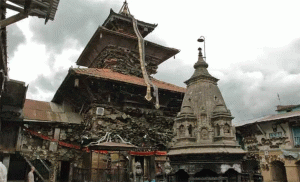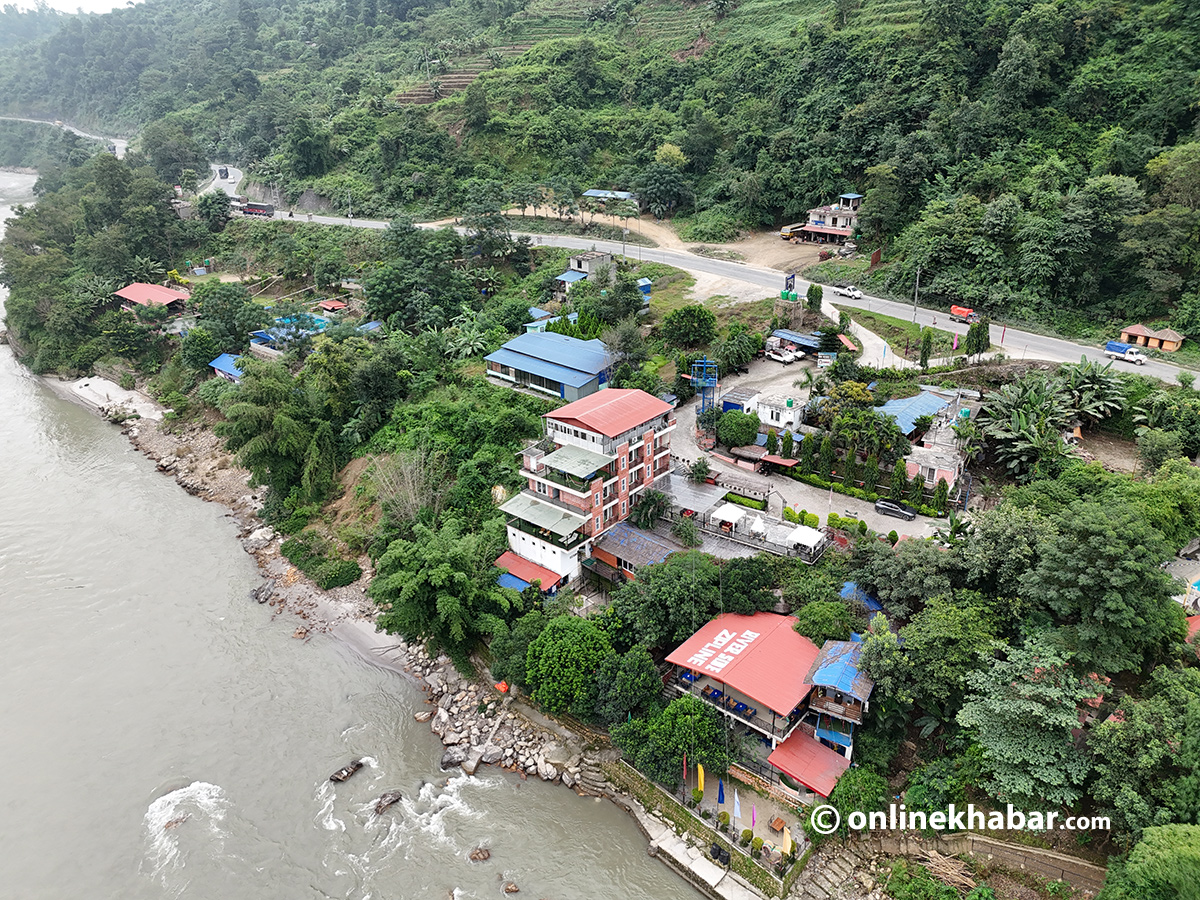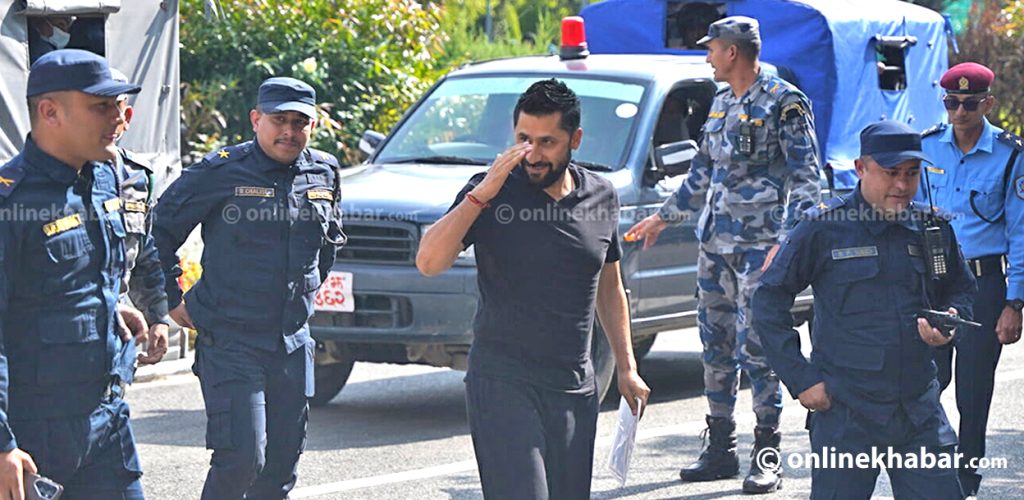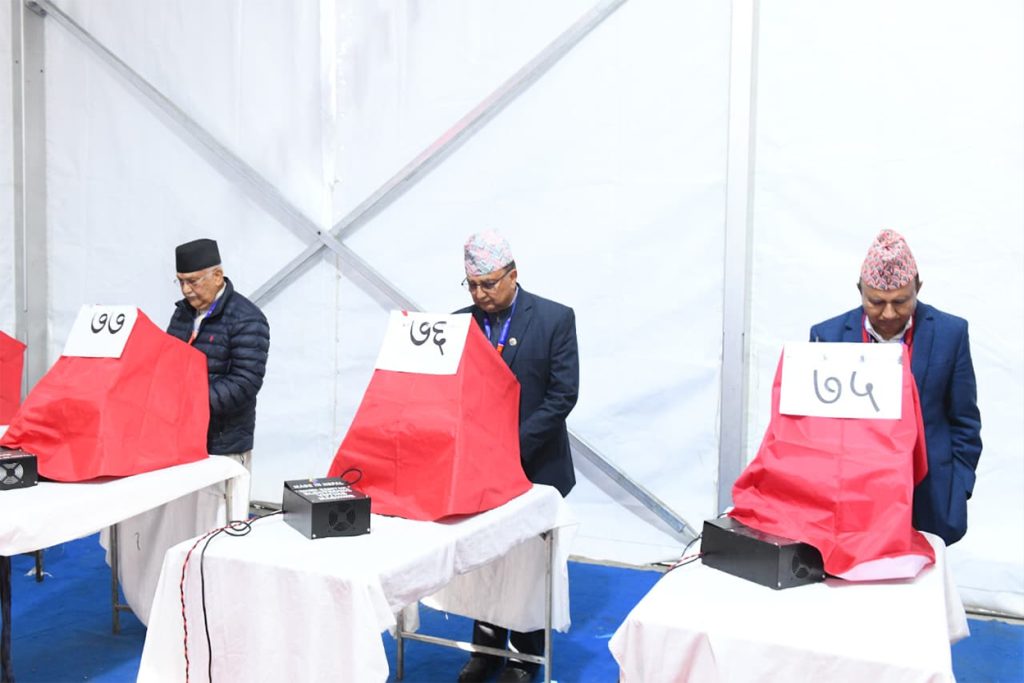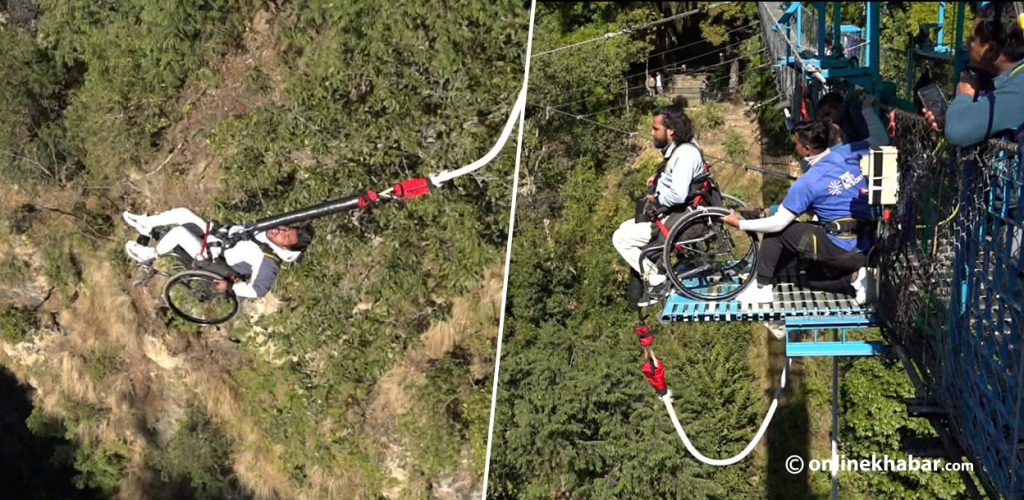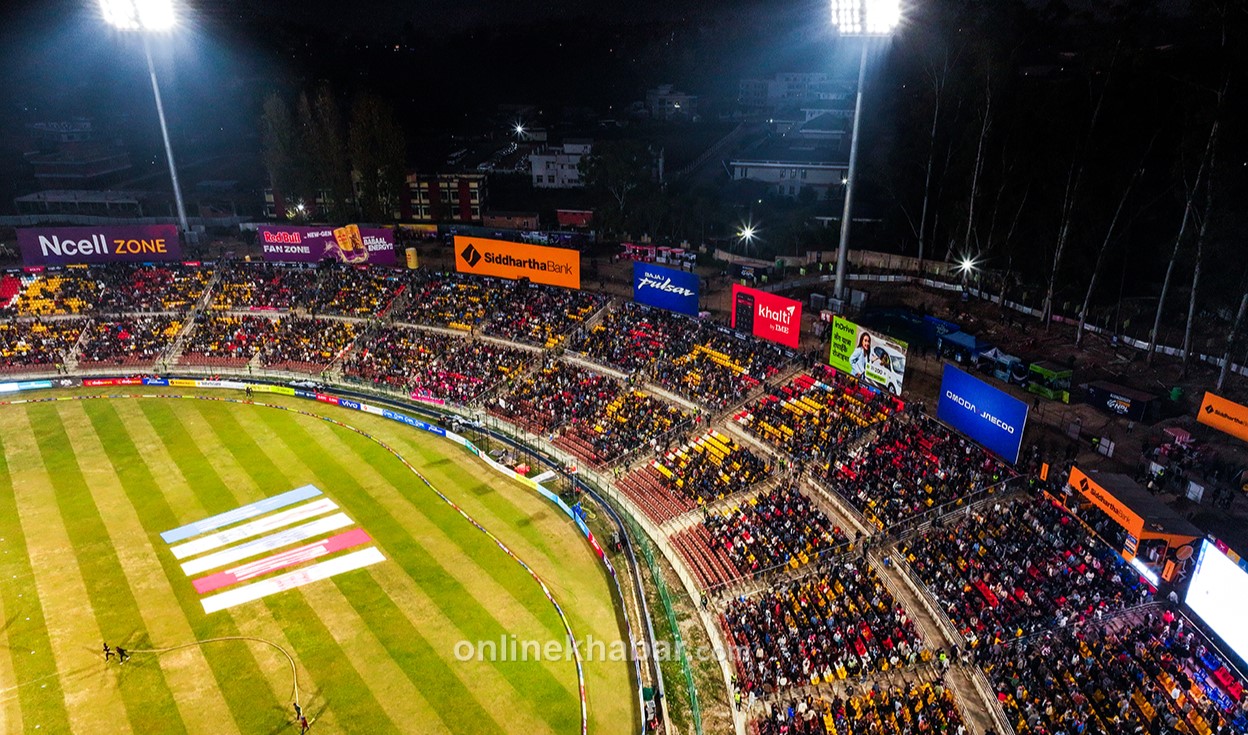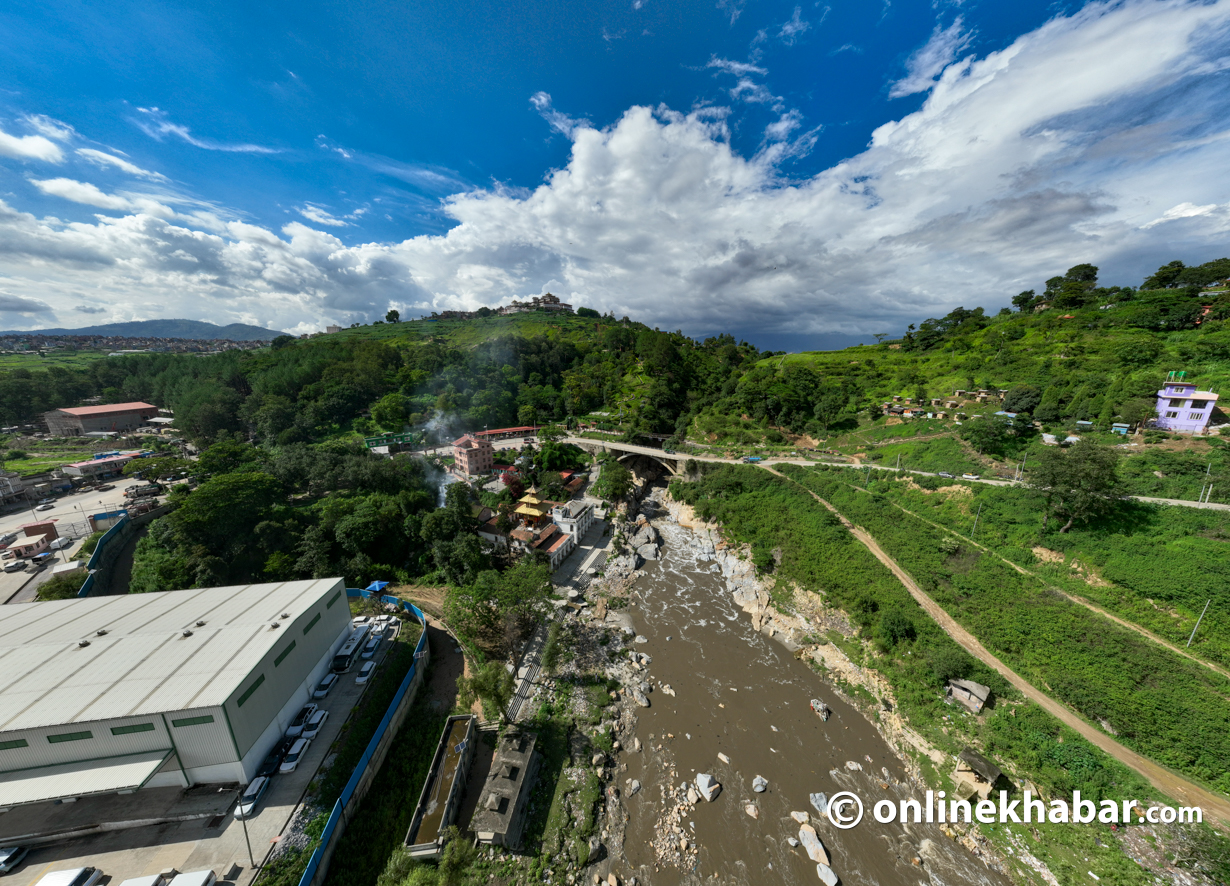
Chobhar Gorge, the only natural outlet for the rivers and streams of the Kathmandu Valley, has become the center of a heated dispute. The controversy stems from a government-led plan to remove five large boulders and accumulated debris from the gorge—an area considered not only geologically significant but also rich in archaeological and cultural value.
The government has entrusted the Nepali Army with executing the operation, arguing that it is necessary to mitigate flood risks. Officials say that clogged boulders, river debris, and a recent landslide from the Kirtipur side have increased the chances of downstream erosion and flooding.
However, local residents and heritage activists have strongly opposed the plan. They argue that tampering with the gorge’s base could destroy its archaeological integrity. Protesters claim the site is not merely a physical structure but a natural heritage site with deep cultural and historical resonance.
Prakash Aryal, project chief of the High-Powered Bagmati Civilization Integrated Development Committee under the Ministry of Urban Development, clarified that only selected boulders obstructing the river flow are being targeted. “We are not demolishing the gorge,” he said, adding that misinformation circulating on social media has fueled unnecessary panic.
The gorge’s significance dates back thousands of years. According to legend, the Bodhisattva Manjushree cut through Chobhar Gorge to drain a vast lake and make the Kathmandu Valley habitable. Over time, the gorge has become emblematic of the Valley’s geological, historical, and spiritual identity.
The issue gained urgency after heavy rainfall from mid-October last year flooded several neighbourhoods in Kathmandu, including Nakkhu, Kalimati, Balkhu, and Thapathali. The rising water levels in the Bagmati River were blamed on the narrow Chobhar passage, prompting the National Disaster Risk Reduction and Management Authority to recommend removing obstructions from the gorge.
On May 28, the government decided to deploy the Nepali Army to support the Urban Development Ministry in this effort, including the plan in its pre-monsoon preparedness program.
Still, the vague wording of “removing obstructions” without a clear explanation stirred fears among locals. Many worried it would lead to widening or cutting through the gorge, triggering protests and public backlash, especially on social media.
Aryal insists the work is being done based on technical studies that identified four key risk areas: accumulated gravel in the river, landslide-induced erosion near Kirtipur, sediment buildup causing water logging, and inadequate drainage systems. “The intervention is focused on flood risk management, not heritage destruction,” he said.
He added that the effort follows recommendations from local authorities, especially after the 2022 floods. Ward 18 of the local government had raised concerns about rising ground levels due to sand deposits and poor drainage, while Kirtipur Municipality-6 also sought federal help to prevent riverbank erosion.
“We are working with the army if needed, based on disaster risk concerns—not to demolish the gorge,” Aryal emphasised.
As debate rages on, the Chobhar Gorge stands at a crossroads: between heritage conservation and disaster preparedness. Whether the government’s intervention strikes the right balance remains a matter of public scrutiny.
